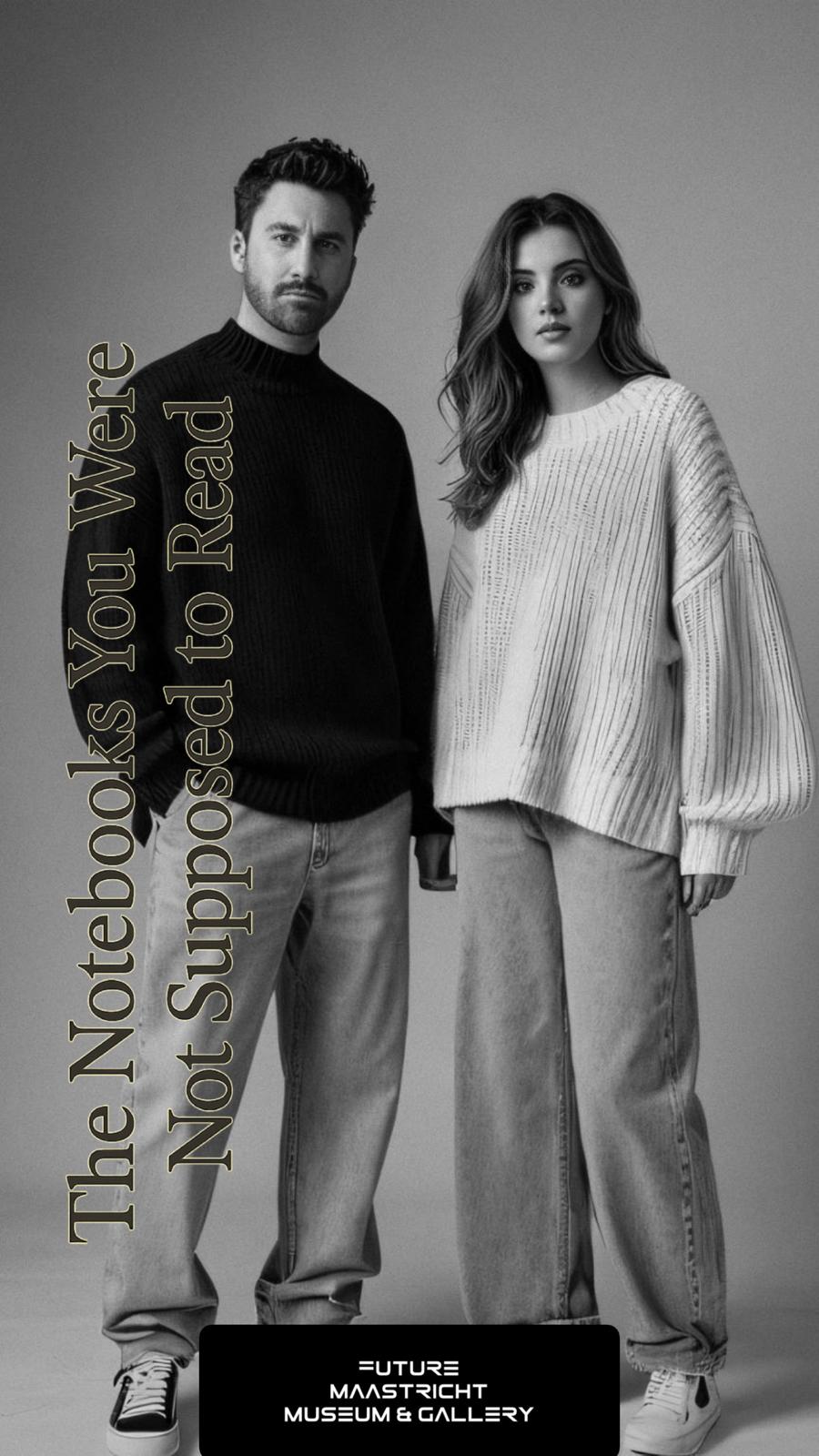The Notebooks you were not supposed to read...
Notebooks II — “Monkeys don’t make art” Poetic-curatorial reflection by Charlotte Madeleine Castelli inspired by the thoughts of Maestro Emanuele Dascanio
ARTISTS
Charlotte Madeleine CASTELLI
10/9/20253 min read


“Monkeys don’t make art, they don’t make war, or maybe they do, but for sure men do, and maybe this is what sets us apart, we know how to create beauty and at the same time destroy it, and worse still we know how to create beauty out of destruction, two peaks that seem opposite but touch each other, or maybe not, because for hundreds of thousands of years nature crushed us and subdued us, we were at the end of the food chain, we barely lived twenty years, then we rebelled, with our redundant brain we started to bend it, to fight it, to win a few battles, so we reached eighty or ninety years, but it is not a victory, it is only an illusion, because every step against nature drags us into a new imbalance, and today the climate collapses, the borders shrink, the conflicts explode, it is a fucking zero-sum game, either we learn to reconcile with nature or we break even the last thread that keeps us alive, and then all that remains is to take the dust of our actions and sublimate it into art, human identity, perhaps a fragile key of salvation, and the paradox remains atrocious, because war distracts us from climate as if it were an anesthetic, but it will be war itself, daughter of climate, to close the circle and bring us to extinction, and then what is art, this anthropocentric pride of ours, a luminous reflection of our damned ignorance, the toxic scrap of our cancerous essence, or perhaps the last evolutionary grip that can save us from the end?.” Maestro E. DASCANIO
“Monkeys don’t make art. Monkeys don’t make war.”
Yet we do.
Perhaps this is what sets us apart: the ability to create beauty and, in the same instant, destroy it.
Two opposing peaks that reach toward each other, brush against each other, and sometimes miss entirely.
An impossible balance, a dance between catastrophe and light.
Reading Emanuele’s words, I see humanity tracing its fragile line through history, a point of light in the vast darkness of nature: for hundreds of thousands of years, crushed, preyed upon, confined to the edge of the food chain.
We lived barely twenty years. Then, with brains too large for survival, we rebelled, bent the world to our will, won a few battles.
Eighty, ninety years… an illusion of control.
Each step against nature created new imbalance.
Today, climate collapses, borders shrink, conflicts erupt.
We live in a circle closing in on itself, and art becomes the only possible breath.
Here is my curatorial reflection: art is no longer mere aesthetics.
It is an act of resistance, a secular liturgy, a mediation between what we create and what we destroy.
Emanuele writes that perhaps all that remains is dust, and that we can transform it into art.
Dust becomes word, form, sign; it becomes a gesture of consciousness.
In this dust lies the weight of our history, our presumption, our anthropocentric pride.
Yet there is also the possibility to sublimate it, to restore meaning and beauty.
The paradox is cruel: war anesthetizes climate consciousness, and yet catastrophe itself will generate new conflicts, closing the circle.
And still, in this abyss, the possibility of art as our last evolutionary grasp emerges.
Not as a tool for material survival, but as witness to our fragility, the final gesture that can restore awareness, measure, memory.
Every work by Emanuele becomes an ethical and aesthetic laboratory.
Not only visual beauty, but a mirror of the human soul: a space to observe the tension between creation and destruction, pride and fragility, memory and oblivion.
In every brushstroke, every nuance, I see humanity attempting to reconstruct a primordial order within ruin.
Light returns as breath, dust becomes sacred, destruction becomes aesthetic gesture.
Perhaps, in the end, art does not save us from the world, but it saves us from our own blind gaze.
Perhaps it allows us to look into the abyss without falling, to witness catastrophe without despair.
Perhaps this is the miracle of art: the last spark of awareness in an overwhelming universe.
And so, the project Monkeys don’t make art is more than observation.
It is meditation.
It is dialogue with our own shadow.
It is the attempt to find beauty amid dust and ashes, to transform collapse into form, suffering into breath, the end into image.
Perhaps, in the dust of our actions, we can still recognize an echo of salvation.
And in that recognition, perhaps lies the true essence of art.
© Charlotte Madeleine Castelli | All rights reserved
